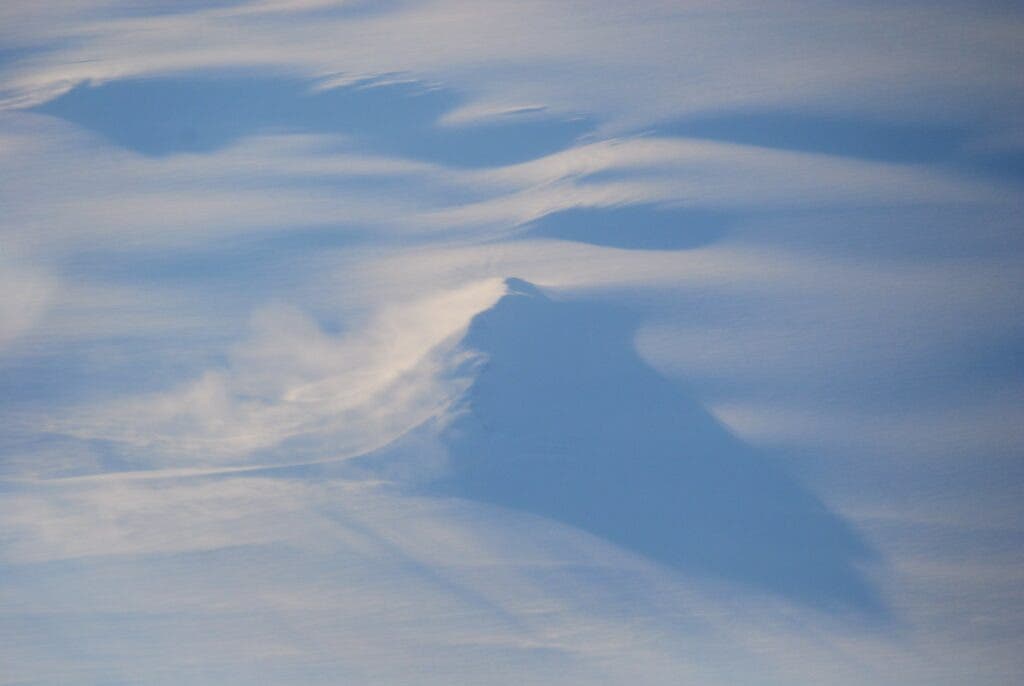It seems like a Hollywood blockbuster but it’s actually a real and concerning story: catastrophic sea level rise could be on the way. Researchers analyzed ice core samples taken in the 1960s from a secret Arctic military base and found that the Greenland ice sheet – which has enough water to raise sea levels by 20 feet worldwide – could melt much faster than previously thought.

More than 60 years ago, US Army scientists dug up the ice core in northwestern Greenland as part of the Iceworm project – a mission to build a subsurface base to hide hundreds of nuclear warheads. The army created a research base called Camp Century as a cover story, but the base was eventually abandoned and the ice core lay forgotten in a freezer.
Researchers rediscovered the ice samples in 2017 and started investigating them in 2019. They found fragments of fossilized plants that could have bloomed a million years ago, which implies there was once vegetation in a spot now buried with ice. Greenland’s current ice cover was thought to be three million years old, but these fragments say otherwise.
Most of Greenland is now covered by the Greenland Ice Sheet, which spans 656,000 square miles (1.7 million square kilometers) – three times the size of Texas, according to the National Snow and Ice Data Center (NSIDC). If the new research is right and most of Greenland’s ice vanished relatively recently, this isn’t good news for the stability of the current ice sheet.
If all of Greenland’s ice were to melt, the seas would rise by about 24 feet (seven meters), according to a 2019 report by the National Oceanic and Atmospheric Administration. This would be enough to flood most coastal cities around the world. While this won’t happen tomorrow, Greenland’s ice sheet is already melting now six times faster than it was in the 1980s and if things don’t change soon, we could face a worst-case scenario.
“Before humans added hundreds of parts per million of fossil fuels to the atmosphere, our climate was able to melt away the ice sheet. In the future as we continue to warm the planet at an uncontrollable rate, we could force the Greenland ice sheet past some threshold and melt it and raise sea levels,” Drew Christ, the study’s lead author, told Gizmodo.
The US Army started building Camp Century in 1959, followed by the extraction of an ice core measuring 11 feet (3.4 meters) from a depth of 4,488 feet (1,368 m) below the ice. The core went to storage after the army finished the project, first in New York and then in Copenhagen. Following an inventory of materials in 2017, researchers were called on to examine the core.
Christ and the group of researchers noticed “little black things” floating in the water. They placed them under a microscope and discovered fossil twigs and leaves in the frozen sediment. Such plants, probably from a boreal forest, could have only grown if Greenland’s ice sheet was mostly gone. So now the next step will be to figure out how recently that happened.
To date the plants, the researchers looked at isotopes of aluminum and beryllium, which accumulate in minerals when exposed to radiation that filters through the atmosphere. They determined that the soil and the plants last saw sunlight between a few hundred thousand and about a million years ago. The traces of leaf waxes resembled those now found on tundra ecosystems.
The researchers estimated that the present ice sheet persisted at more or less the same size for about 2.6 million years, using geological records and ocean geochemistry. However, the findings showed that ice vanished almost entirely from Greenland during at least one period in the island’s most recent deep freeze – a previously unknown threshold for ice sheet stability.
“This is important as we move forward into a warmer future,” Christ told Gizmodo. “Our climate system has a delicate balance to it. If it changes enough, you can melt away large portions of these ice sheets and raise sea levels — and that would inundate and flood large portions of the most densely populated areas on Earth.”
The study was published in the journal PNAS.


